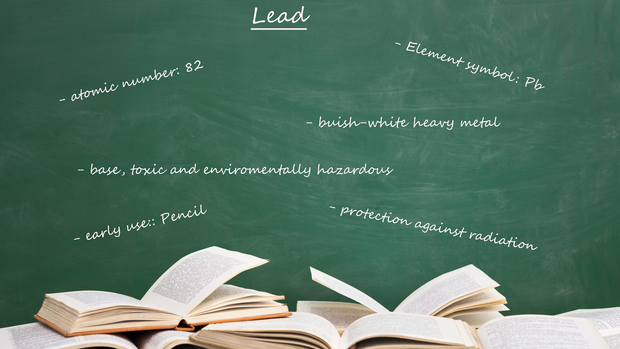Lead is a chemical element with the atomic number 82 and the element symbol "Pb", Latin "Plumbum".
Lead is very rare in pure form and is most commonly found in China, Australia and the USA.
The proportion of lead in the Earth's shell is 0. 0018% and is therefore extremely rare compared to other elements,
such as aluminium. Lead is a bluish-white heavy metal, which is most commonly found in combination with ores.
Such ore compounds are, for example, galenite, which is lead sulphide, or anglesite, which is lead sulphate.
Properties of lead
Lead is a base, toxic and environmentally hazardous heavy metal, which makes all lead compounds toxic.
It is a soft metal and therefore easily deformable, which means that the processing of the fabric is very easy.
The melting point of lead is low compared to other metals and is 327. 43°C. It does not react with water but
when in contact with air. Lead forms a protective layer when in contact with air.
The ore compound galenite is processed and lead is extracted from it in the next steps. For this purpose, the ore is roasted at 1000°C hot air.
In this process, the lead reacts with the oxygen to lead(II) oxide, which is liquid. Next, the lead(II) oxide is reduced with carbon or coke to lead, which still has to be cleaned of impurities. Lead is very versatile in its application and an inexpensive material. It is used both as a metal, e. g. for weighting or protection against radiation, as well as in its main use as an alloy. A very well-known product is also the pencil.
In the past, lead was used to write with it, but today the mine is made of graphite, which contains no lead content.


